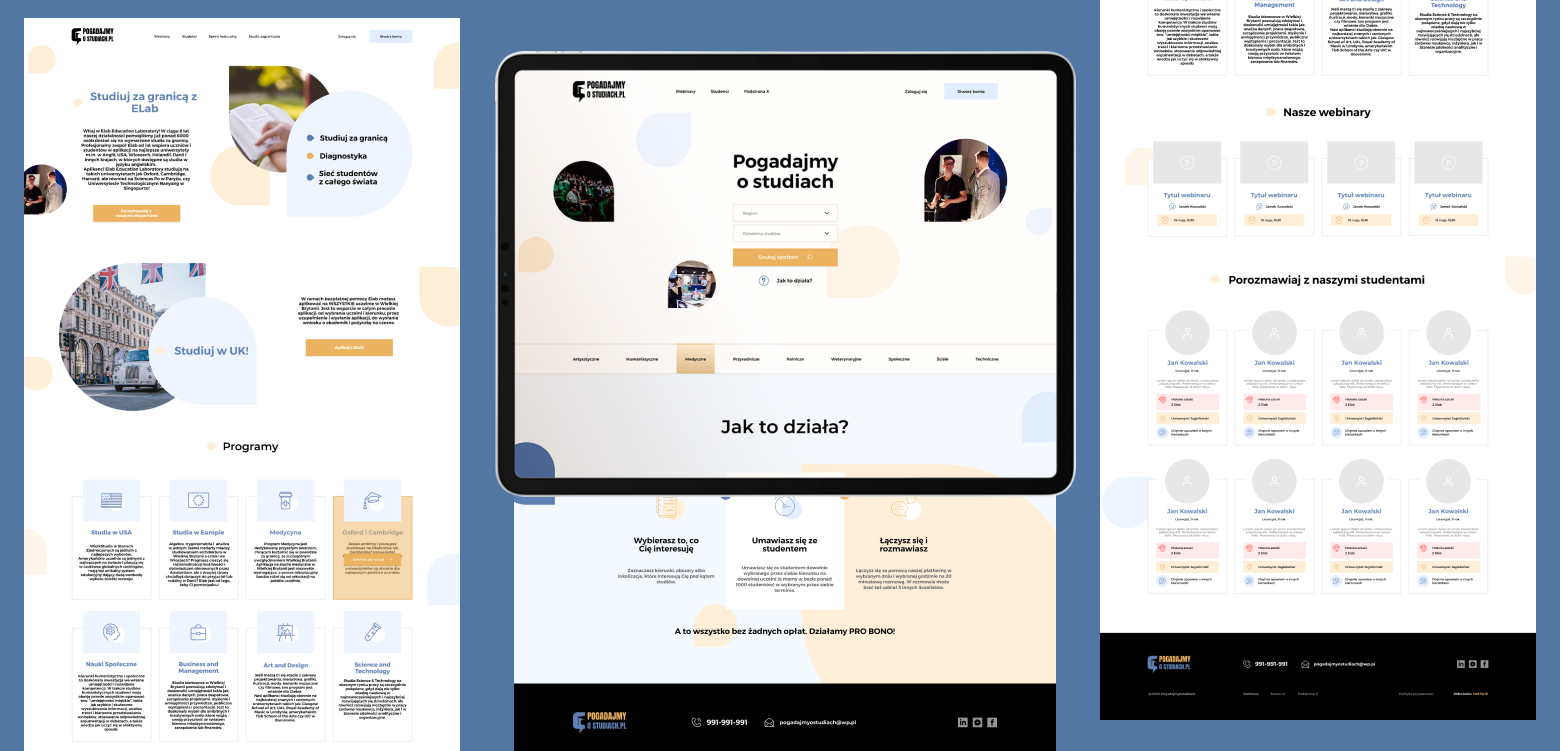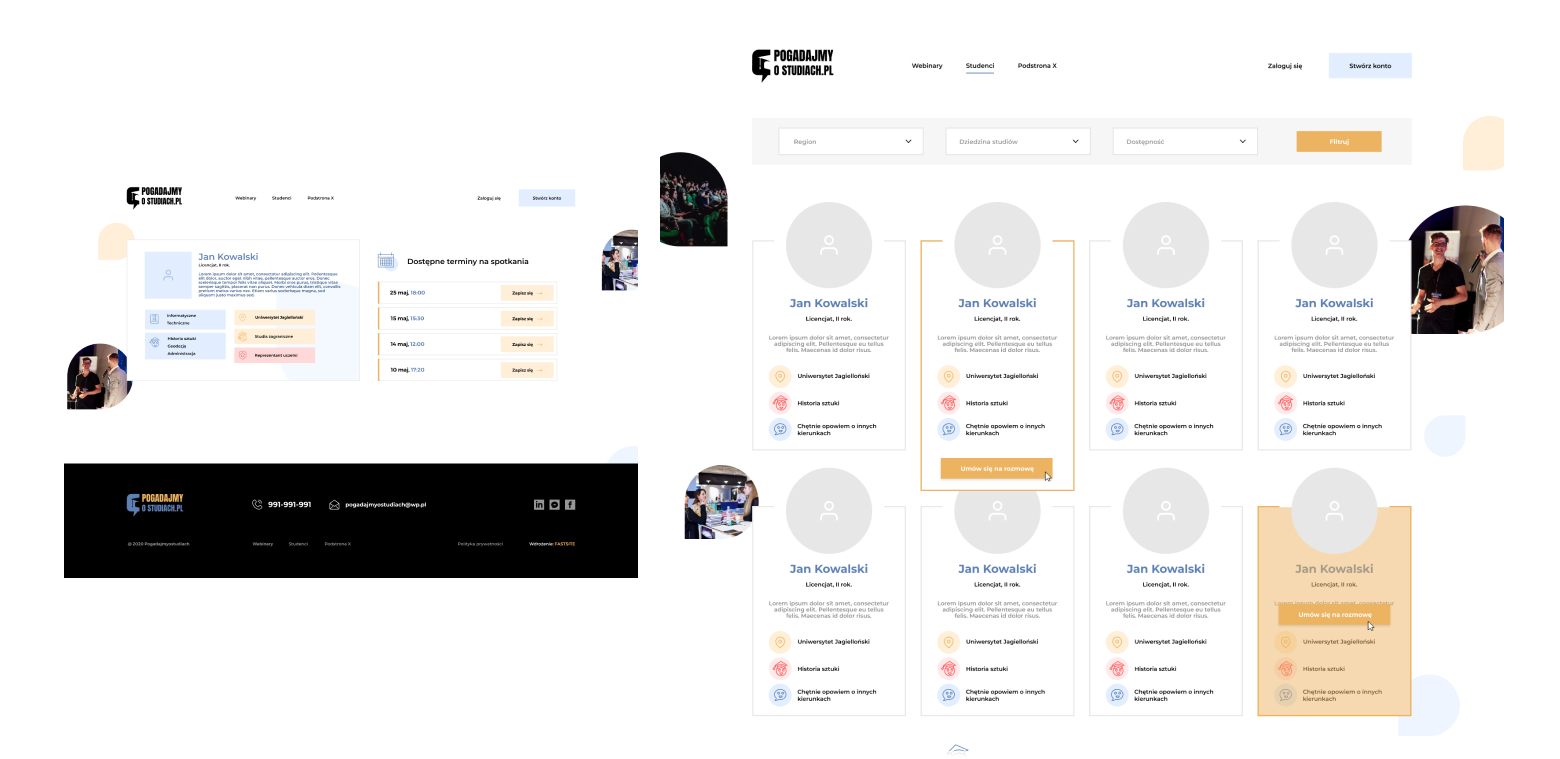This site uses Cookie. Read privacy policy
Case studies
How to organize a conference during a pandemic?
The COVID-19 pandemic has surprised everyone. Organizers of all kinds of mass events, conferences and events were also among the injured professions and industries. The particularity of their difficult situation was that many events had already been planned and had to be postponed, canceled or… carried out in a completely different formula.
Studia na Horyzoncie bravely chose the third option – switching several stationary conferences held in different Polish cities, in a two-week session of meetings with speakers from all over Poland online. Over 600 students telling about selected fields of study, thousands of high school students, all the largest universities in Poland, and some also abroad – all combined within a dedicated online platform. It sounds great? Sure! If not for one short sentence closing the inquiry: “We have 3 weeks.”

1. Agile
It would be impossible to deliver a functioning product within this deadline if we had not used the agile approach and managed the project “agile”. In such a dynamic environment, it was impossible to predict every problem encountered, and there was no time to consider whether it was better to choose option A, B, or something in between. All decisions were made on the basis of the prototypes being created, details were improved in cycles so as not to suspend the project. We strived to build a prototype of the so-called “MVP” (Minimal Viable Product), which would achieve the most important of the assumed goals – conference service. All functionalities, improving its quality and user convenience, were a consequence of the development of this MVP.
2. Integration with the video calling system
The key functionality for the entire project was the integration of the portal with the Zoom program for online meetings. We wanted the meetings to be embedded in the website and participating in them did not require users to download any additional program. Integration turned out to be the most difficult element of the implementation and caused the most unexpected problems. However, in order to build the best user experience, it was worth finishing it – when the meeting started, it was enough to click “Join the meeting” at the appropriate lecture in the schedule individually created by each user.
3. User tests
The user testing phase is the culmination of the agile design thought. And I don’t mean the issues that were patched during the first few days of bugs, which could not really have been avoided with such a short time for earlier testing. Based on the feedback from users, their interactions with the website and other users, we were able to verify the assumptions of our plan. We managed to implement some useful functionalities that we had not thought of before, during the conference. On the other hand, several others, implemented by us, turned out to be much less important than we first thought.

The project was successful, as evidenced by the recommendation we received from the client. The interest in the project and the number of meetings during the conference exceeded even the expectations of the organizers. At its peak, nearly 100 meetings were active at the same time! For us it was a lot of experience, and for high school students a lot of practical knowledge, useful in further personal development.
Other Case Studies
See other realisations